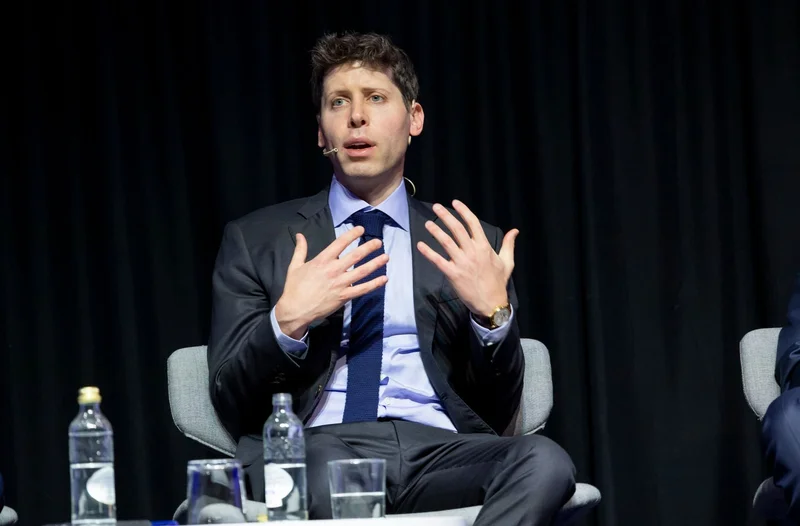Tracking Wealth Through the AI Lens
Tracking Wealth Through the AI Lens
Of course. Here is the feature article, written from the persona of Dr. Aris Thorne.
*
The headlines are practically screaming. A trillion dollars in deals. Twenty gigawatts of power—enough to run a small country. A breakneck pace that leaves even seasoned tech CEOs breathless. When you look at the numbers swirling around Sam Altman and OpenAI, it’s easy to feel a sense of vertigo. The scale is so immense, so utterly audacious, that the default human reaction is skepticism, even fear. Critics see a house of cards, a reckless gamble with the global economy. They see a tech bro moving too fast and breaking too many things.
When I first saw that trillion-dollar figure flash across my screen, I didn't see a bubble. I saw a blueprint. I saw the kind of ambition that doesn't come around once a decade, but once a century. We’re not watching a startup chase revenue; we’re watching an attempt to build the foundational infrastructure for the next stage of human civilization. This isn't a financial bet. It's the Apollo Program for intelligence.
Let's talk about that speed. I hear people call it "reckless," and it's true that many Tech CEOs marvel — and worry — about Sam Altman's dizzying race to dominate AI. But as Box CEO Aaron Levie astutely pointed out, these platform shifts only come around every decade or two, and this is the biggest one we've ever seen. You don't win a paradigm shift by moving cautiously. You win it by having the courage to build the future before everyone else agrees on what it should look like.
What OpenAI is doing with its colossal deals with Nvidia, AMD, and Oracle is something I can only describe with an analogy. Imagine being tasked with electrifying a new, uninhabited continent. You wouldn't start by building a single power outlet for one house. You'd build the massive dams, the sprawling power plants, and the continent-spanning grid first. You build the infrastructure at a scale that anticipates not just the first village, but the millions of homes and industries that will eventually draw power from it.

That’s what Sam Altman is doing. He is building the power grid for the age of artificial intelligence.
The concerns about "circular deals"—where Nvidia invests in OpenAI, which then buys Nvidia's chips—miss the beautiful symbiosis of what's happening. This isn't just a financial loop; it's a co-evolutionary one. In simpler terms, the makers of the "brains" (the chips) are investing directly in their most ambitious customer to accelerate the development of the "mind" (the AI models). It’s a feedback loop designed for exponential progress. So, the question isn't whether this intricate web of investments is stable enough to avoid a crash. The real question, the one that should keep us up at night with excitement, is: What world-changing problems could we finally solve with this level of computational power at our fingertips?
Nowhere is this exponential curve more visible than with Sora 2. In less than a year, we've gone from blurry, uncanny videos to creations that are nearly indistinguishable from reality. The immediate reaction from many was to focus on copyright, on what was being "stolen." It’s a predictable, but ultimately limited, way of seeing the world. It’s like looking at the first printing press and only complaining that it devalues the work of scribes who spent months hand-copying a single book.
The printing press didn't just copy old books; it created the possibility of mass literacy, of scientific journals, of the novel. It fundamentally rewired our relationship with information. Sora and models like it aren't just learning to "copy" our visual world; they are learning its grammar. They are learning the language of light, motion, and narrative. And the speed of this is just staggering—it means the gap between human imagination and tangible creation is collapsing faster than we can even comprehend, and that is one of the most profound shifts in creative history. This is the kind of breakthrough that reminds me why I got into this field in the first place.
Of course, with this power comes immense responsibility. We must build the "libraries" for this new technology—the ethical frameworks, the safety systems, the societal norms. We can't be naive about the challenges. But to halt progress out of fear is to choose stagnation. The challenge isn't to stop the wave, but to learn how to surf it. We need to be the architects of its responsible application, not Luddites standing in its path. What kind of new art forms, educational tools, and scientific visualizations become possible when anyone can bring their ideas to life?
The critics who see a financial bubble or a reckless gamble are standing too close to the canvas. They’re analyzing the individual brushstrokes—the quarterly earnings, the power consumption, the political hand-shaking—and missing the masterpiece taking shape. They are looking at the dust and noise of a construction site and complaining about the mess, while Sam Altman is looking up at the cathedral spires that only he can see clearly.
This isn't about the next fiscal year. It's about the next hundred years. The trillion-dollar bet isn't on OpenAI's valuation; it's a bet on humanity's potential when amplified by artificial intelligence. It's an audacious, terrifying, and utterly necessary project to build the engine that will power our future. We are living through the first moments of a new era, and history will not remember the skeptics. It will remember the builders.